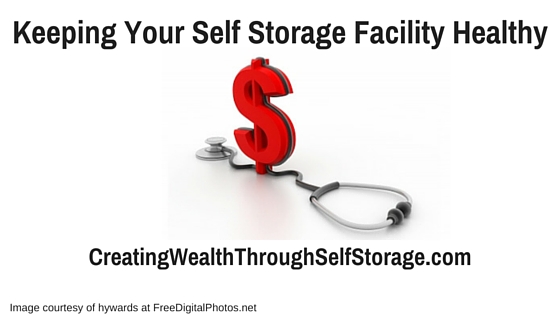I often tell people “If you keep your eye on about 5 things, your self storage facilities can be a very profitable business.”
Let’s discuss one of them.
We started taking last week about the difference between physical occupancy and economic occupancy, but lets really dive into it. It can make a huge difference on the economic health of your facility.
I’ll use one of our self storage facilities as an example.
This facility is big. We have over 950 customers. It’s around 100,000 square feet of self storage plus 240 parking spots.
The gross potential income is $114,241 per month. Including the parking, the facility is 166,967 square feet.
Now it is Dec/Jan – our slowest time of the year. We have 160,892 square feet occupied or 96.4% occupied.
Sounds good doesn’t it. It is.
Do we stop there and pat ourselves on the back?
Let’s take a deeper look.

If you could get the street rate or listed rental rate for all the occupied units, it would be $109,563, or 95.9% of the gross potential.
But we are not getting that. We are actually scheduled to get $102,396 which is 89.6% of gross potential. This is slightly over a 5% difference between what we could possibly get for all the rented units and what we are scheduled to get.
I know we are deep in the weeds now, but as an owner you have got to look at this.
I said in the last post that if there is ever more than a 5% difference between gross potential and economic occupancy the manager and I are going to have a conversation.
But I dug down a little more and here’s what I found out. Well, more accurately, here is what I forgot.
A few months ago, we had a price increase. What we did was raise the street rate for everyone who had been in the facility for over 6 months. If you had moved in within 6 months of the date of the price increase, we were going to wait for a certain amount of time before the rate increase took effect.
That time is up in March. So in a couple of months, the $6,376 variance is going to go way down, closing the gap between what we should be getting on the rented units and what we are actually getting.
Now you might think this is not a big deal, but let’s really look at it. Let’s say we close the gap by $5,000. That’s not just $5,000 more per month, it is $60,000 per year.
And it is not just $60,000 per year, it is $750,000 worth value at an 8% CAP. (If not sure what that means, review last weeks’ post).
So as I was reviewing the closing for last month’s management report for this facility, that is what I saw and that is the drill I went through.
I recommend you staying on top of your numbers and knowing them. Making friends with your reports can be worth a lot of money.




What are the 5 most important things to watch?
1. Sq Ft rented (occupancy rate)
2. Economic occupancy
3. Delinquency
4. % of operating expense increase this year over last
5. % of income increase this year over last
These are what I focus on.
Collection calls, not giving discounts, and when we have a price increase, everyone get the increase.